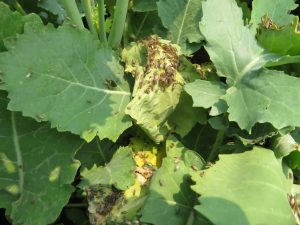Grain growers and agronomists in northern New South Wales and southern Queensland have a unique opportunity to be involved in a Rutherglen bug (RGB) project to better inform RGB management strategies by either:
- reporting Rutherglen bug sightings online or
- signing up for a sampling kit to collect Rutherglen bugs for DNA analysis.

RGB infestation on canola (Photo by Zorica Duric)
A native migratory species, Rutherglen bug causes occasional but significant damage to sunflower, sorghum, canola, and safflower. In years of significant RGB populations, pulses and cereals may also be affected. Very little is known about the landscape ecology of Rutherglen bug other than it can be found on a wide variety of plant hosts, including many weed species.
Incidence reports provide valuable information to help identify the conditions that might be associated with Rutherglen bug flights.
DNA from Rutherglen samples gives an insight on where the Rutherglen bugs are coming from and how related the populations are, particularly in terms of whether they are traveling long distances or if they are local populations.
About the project
Grains Research and Development Corporation (GRDC) project CSP2104-007RTX is a collaboration between CSIRO, the University of Queensland and the New South Wales Department of Primary Industries.
This project will help researchers understand how populations of RGB persist in the local environment and why they suddenly appear in crops. It will update management guidelines to minimise the effects of early- and late-season infestations and provide a risk framework to predict likely infestation from both locally emerged and migratory populations.
Learn more at the CSIRO website.

Living next door to the famous Rutherglen wine region near Albury-Wodonga, where canola and wheat are the next major crops, taking an active role in the monitoring project is important for the region.